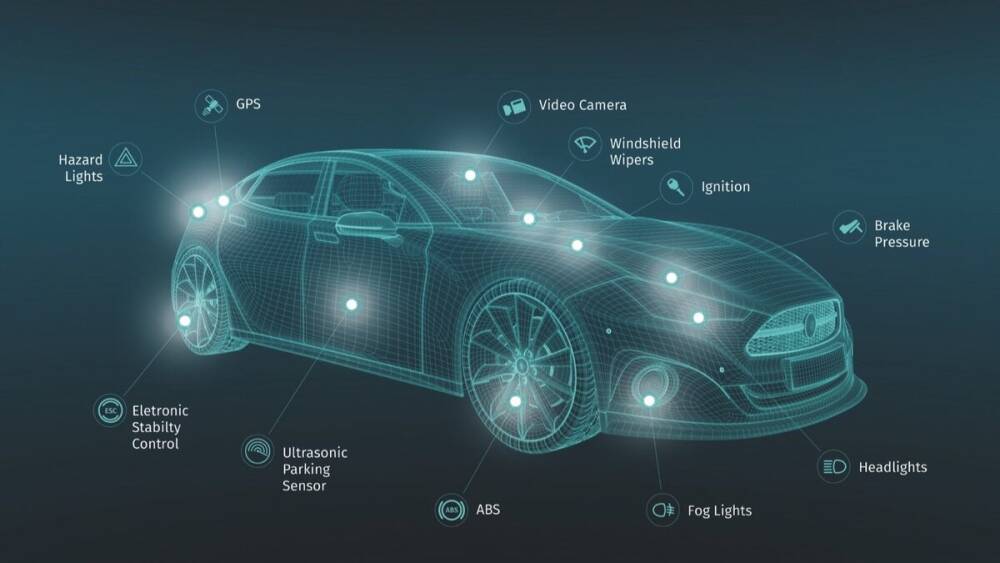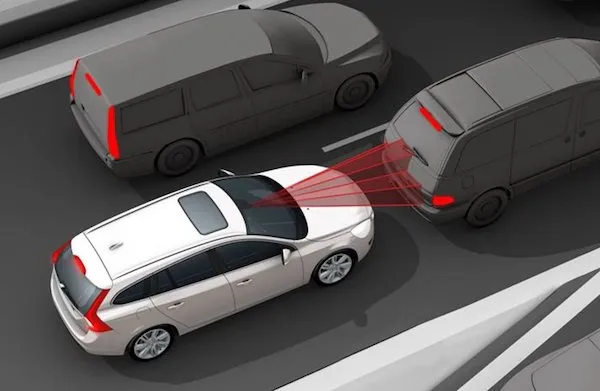Top Safety Features in Modern Cars How Advanced Technologies Are Making Driving Safer

Modern vehicles have transformed from simple modes of transportation into highly sophisticated machines packed with advanced safety technologies. These innovations aim to prevent accidents, protect passengers, and make driving safer and more convenient.
In this blog, we’ll explore the top safety features in modern cars, such as automatic emergency braking, adaptive cruise control, and lane keeping assist, and understand their impact on road safety.
The Evolution of Car Safety
Car safety has progressed significantly over the decades. From the invention of seat belts to the development of airbag systems, each advancement has contributed to reducing injuries and fatalities. Today, the focus is on prevention rather than just protection, thanks to advanced safety technologies that actively assist drivers in avoiding accidents.
Top Safety Features in Modern Cars
1. Automatic Emergency Braking (AEB)
AEB systems use sensors, cameras, and radar to detect potential collisions. If the driver doesn’t respond in time, the system automatically applies the brakes to prevent or reduce the impact of a crash.
-
Why it’s important: AEB is especially effective in preventing rear-end collisions and reducing the severity of crashes.
2. Adaptive Cruise Control (ACC)
Unlike traditional cruise control, ACC automatically adjusts your car’s speed to maintain a safe distance from the vehicle ahead. It’s particularly helpful during highway driving.
-
Why it’s important: ACC reduces driver fatigue and minimizes the risk of accidents caused by tailgating.
3. Lane Keeping Assist (LKA)
LKA systems monitor your car’s position within the lane. If you start to drift without signaling, the system provides alerts and may even apply gentle steering corrections.
-
Why it’s important: LKA helps prevent lane departure accidents, one of the leading causes of head-on collisions.
4. Blind Spot Monitoring (BSM)
Blind Spot Monitoring uses sensors to detect vehicles in areas outside your direct line of sight and alerts you when it’s unsafe to change lanes.
-
Why it’s important: BSM enhances situational awareness and prevents side-swipe accidents.
5. Electronic Stability Control (ESC)
ESC detects when the car is losing traction or skidding and automatically applies brakes to specific wheels to maintain stability.
-
Why it’s important: ESC reduces the risk of rollovers and improves control on slippery roads.
6. Rearview Cameras and Parking Assist
Rearview cameras provide a live feed of what’s behind your car, while parking assist systems use sensors to help you navigate tight spaces.
-
Why it’s important: These features prevent minor collisions and enhance safety during parking maneuvers.
Benefits of Advanced Safety Technologies
Modern safety features offer numerous advantages:
-
Accident Prevention: Technologies like AEB and LKA actively reduce the likelihood of collisions.
-
Enhanced Driving Experience: Features like ACC and BSM make driving more comfortable and less stressful.
-
Improved Passenger Protection: Airbags and ESC systems provide superior protection during crashes.
-
Lower Insurance Costs: Vehicles equipped with advanced safety technologies often qualify for insurance discounts.
-
Increased Resale Value: Cars with top safety features retain higher value in the market.
Challenges and Limitations
Despite their benefits, these advanced safety technologies have limitations:
-
High Costs: Vehicles with the latest safety features can be more expensive.
-
Reliance on Technology: Drivers may become overly dependent on these systems, potentially leading to complacency.
-
Maintenance Requirements: Sensors and cameras require regular upkeep, which can be costly.
The Future of Car Safety
The future of car safety is moving toward greater automation. Emerging technologies like Vehicle-to-Everything (V2X) communication and fully autonomous systems promise to make roads even safer. These innovations will enable vehicles to share real-time information with each other and their surroundings, preventing accidents before they happen.

Conclusion
The top safety features in modern cars, such as automatic emergency braking, adaptive cruise control, and lane keeping assist, are transforming the way we drive. By combining advanced safety technologies with intelligent design, manufacturers are making cars smarter, safer, and more reliable.
When choosing your next car, prioritizing these safety features is not just a wise decision—it’s an investment in your well-being and peace of mind.
